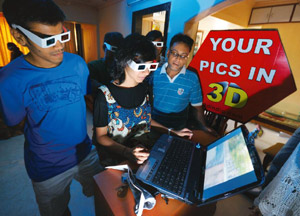

- October 09
- March 10
- April 10
- May 10
- June 10
- July 10
- August 10
- October 10
- November 10
- December 10
- January 11
- February 11
- April 11
- May 11
- June 11
- July 11
- August 11
- September 11
- October 11
- November 11
- December 11
- January 12
- March 12
- April 12
- May 12
- June 12
- July 12
- August 12
- September 12
- October 12
- November 12
- December 12
- January 13
- March 13
- April 13
- May 13
- June 13
- August 13
- September 13
- October 13
- April 14
- June 14
- November 14
- December 14
- January 15
- April 15
- May 15
- June 15
- August 15
- September 15
- October 15
- November 15
- December 15
- January 16
- February 16
- March 16
- April 16
- June 16
- September 16
- October 16
- July 17
- October 18
- December 18
- March 19
- August 19
- November 19
- March 20
- June 20
- July 20
- August 20
- September 20
- December 20
- August 21
- November 21
- March 22
- July 22
- October 22
- November 22
- March 23
Open your Third Eye

Two years ago, cinematographer Jogendra Panda understood the impact of 3D when he saw an underwater scene in a studio in London. “The screens were around me and an under-the-sea sequence was being shown. I could feel the particles of sand float by me and I could feel the pointed teeth of a shark almost touch my nose,” says Panda.

Made in India: Jogendra Panda with his camera. Kedar Bhat/Mint
The sight of the shark’s teeth was an epiphany: “I knew then and there that 3D was the next big thing.”
Panda, a graduate of the Film and Television Institute of India (FTII) in Pune, is the cinematographer of films such as Sins andJajantaram Mamantaram. He is among the few who have been working towards the development of 3D in India; long before James Cameron’s Avatarmesmerized the world.
Panda came back from London and began experimenting with developing his own 3D camera. IDream Production, a film production and distribution company, financed the project. He began work on his 3D set-up in August and completed it in March. He has done a few product shoots on a trial basis with the camera.
The reason Panda wanted to assemble a camera here was because the ones available abroad were too expensive and unsuitable for shooting in Indian conditions. “Most of us (cinematographers) know the science behind making a 3D set-up, it’s just that nobody tried earlier.” His modified equipment is 25-30% cheaper.
Hitesh Gusani, the proprietor of Cybertec Studio, a website design studio, had developed a rudimentary set-up before Panda. Gusani was always passionate about still photography, but in 2004 he discovered another dimension to it. A friend posted online a 3D photograph of a desk with the instruction that the viewer should cross his eyes (like looking at the tip of your nose) to be able to see the third dimension. Gusani was thrilled to “see” the edge of the desk “jutting out of the screen” and decided to try it out himself.
He searched online for instructions on how to click 3D photos and came across several communities where enthusiasts discussed 3D and shared their work. With the help of these groups, Gusani made his own rudimentary 3D set-up—a FRP (fibre-reinforced plastic) rig mounted with two digital cameras and cables which connected the switches of the cameras. The integrated switches allow one click to activate both cameras, thus giving you two simultaneous images of the same object. These are then processed and integrated into one image using freely available computer software.
In 2006, Gusani, along with four friends, set up India’s first 3D club—3D India Club. The first meeting, which was held in Gusani’s flat in Mumbai, was attended by the group of five. Today, 3D India has 50 paid members and 500 online members. The youngest member is 15 and the oldest, 65. They come from backgrounds as diverse as fashion photography and the civil services.

Futurist: Hitesh Gusani (extreme right) at a 3D photography session in Mumbai. Kedar Bhat/Mint
Gusani decided to cash in on his passion in 2008. He set up a unit for manufacturing 3D spectacles. Till then, enthusiasts used to get their spectacles by ordering DVDs of 3D Hollywood films (the spectacles would be complimentary) or by pocketing those made available by theatres during the screening of 3D films (theatres are supplied spectacles by the distributors). With the launch of this unit—3D India—Gusani was able to supply spectacles to club members across India through resellers.
But the real push came from Avatar, which released in December, as well as other Hollywood films releasing in theatres here.
In the first month after setting up the manufacturing unit, 3D India sold two spectacles. In the five months after Avatar, 3D India has sold 10,000 spectacles, the paper ones for Rs50 each and the plastic ones for Rs500. Gusani is now gearing up to enter the retail market.
He has also spent the last two years holding workshops for students. From the Maharaja Sayajirao University of Baroda to the Indian Institute of Technology, Roorkee, Gusani has toured the country, teaching youngsters the science and technology of 3D.
None of this would have been possible if theatres hadn’t gone digital.
Ranjit Thakur, CEO of Scrabble Entertainment Pvt. Ltd, set up Scrabble in November 2007, with the aim of converting theatres in the country to the 2K digital cinema platform. Scrabble went about convincing theatre owners that they could show films using hard drives and satellite transmission instead of film reels. The advantage? Better picture quality and a faster India release for Hollywood films.
“Quality is a relative term and we think that if something works, then it works all right,” says Thakur. He had a lot of convincing to do before anyone agreed to go digital.
In the past, several Hollywood films have not been released in India because screens were not up to the mark when it came to projecting films shot in high definition. In 2007, Scrabble signed deals with the six major Hollywood studios—Paramount, Universal, Walt Disney, Fox, Warner Bros and Columbia—that allowed it to bring Hollywood films to digital theatres.
Thakur used this deal as the bait to convince theatre owners to go digital. The first multiplex that Scrabble converted was Fun Republic in Mumbai’s Andheri area on 15 August 2008. Since then Scrabble has made 152 screens digital, of which 60 can show 3D films. For the Indian Premier League (IPL) screenings in 3D, Scrabble enabled 20 more screens.
While Gusani, Panda and Thakur are engaged in promoting 3D in India, they are realistic enough to know that it is not everyone’s cup of tea. “It’s twice the amount of money, time and effort. If you’re making something in 3D then it has to deserve that extra dimension,” says Panda, who is sceptical about all the Bollywood directors who have announced 3D projects. Thakur agrees, but feels that once we are tired of the “spectacle value” of 3D, content will automatically improve. He thinks it is great that Avatar happened when it did—it has gone a long way in making the audience more discerning.
blessy.a@livemint.com
MORE NEWS
- News from AnimationXpress
April 12, 2010
- FX School gets Support from FutureWorks ...
October 29, 2009
- FX School students make music video for ...
March 25, 2010
- Stereo 3D Capabilities Expanding Worldwi ...
June 02, 2010
- Paprikaas Is Now Technicolor India
May 15, 2010








